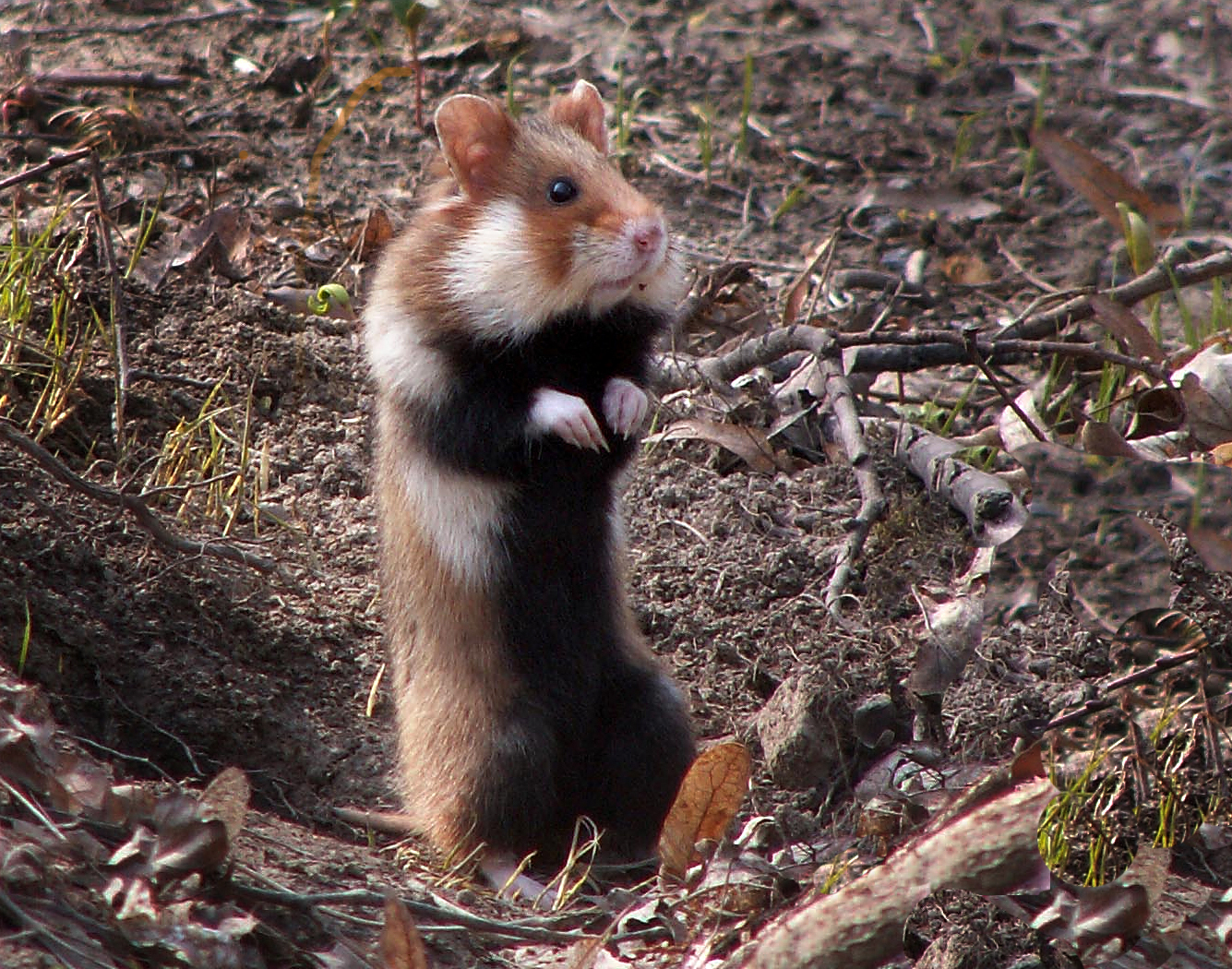AY Honors/Small Mammal Pets/Answer Key
| Golden or Syrian Hamster |
|---|
| Template:Taxonomy |
| Binomial name |
| Mesocricetus auratus |
The Syrian Hamster or Golden Hamster, Mesocricetus auratus, is the best known member of the rodent subfamily Cricetinae, the hamsters. They may now be extinct in nature, but are popular as house pets all across the world, and are also used in scientific research. Adults grow from 5" to 7" in length, and in captivity will usually live from 2 to 3 years.
Like most members of the subfamily, the Golden Hamster has expandable cheek pouches, which reach from its cheeks to its shoulders. In the wild, hamsters are larder hoarders, and they use their cheek pouches to transport food to their burrows. They can load a remarkable amount of food into their pouches; their name in the local dialect in the area where they are found translates as "father of saddlebags". If food is plentiful, they will store it in large amounts, and it has been reported that 25Kg of grain was found in the burrow of a single hamster.
Most hamsters in American and English pet stores are Syrian Hamsters. "Teddy Bear" is a term sometimes used for the longhaired variety of the Syrian Hamster, and the so-called "Black Bear" hamster is just a Syrian Hamster with black fur. All of them may well indeed be the descendants of a single mother.
Golden Hamsters have been used in scientific research, in the study of many diseases, and also in the study of behaviour. They have a number of fixed action patterns that are readily observed, including scent-marking.
Discovery of the Syrian Hamster
In 1839 British zoologist George Waterhouse reportedly found an elderly female hamster in Syria, naming it Cricetus auratus, the Golden Hamster. The hamster's fur was on display at the British Museum (Natural History). The Syrian Hamster was then ignored by European science for the next century. Around 1930, zoologist and Professor at the University of Jerusalem Aharoni found a mother and litter of hamsters in the Syrian desert. By the time he got back to his lab, most had died or escaped. The remaining hamsters were given to the Hebrew University of Jerusalem, where they were successfully bred. They were a bit bigger than the ones Waterhouse found, so they were named Mesocricetus auratus, although they were probably the same species. Mesocricetus auratus is the currently accepted scientific name of Syrian Hamsters.
Descendants of these hamsters were shipped to scientific labs around the world, for use as research animals. They arrived in the United Kingdom in 1931, and in 1938 reached the United States. Just about all Golden Hamsters are descended from the original litter found in Syria, except for a few that were brought into the United States by travellers who found them in the desert. A separate stock of hamsters was imported into the US in 1971, but it isn't known if any of today's North American pets are descended from them.
See also Hamster for a general discussion of hamsters and hamsters as pets.

